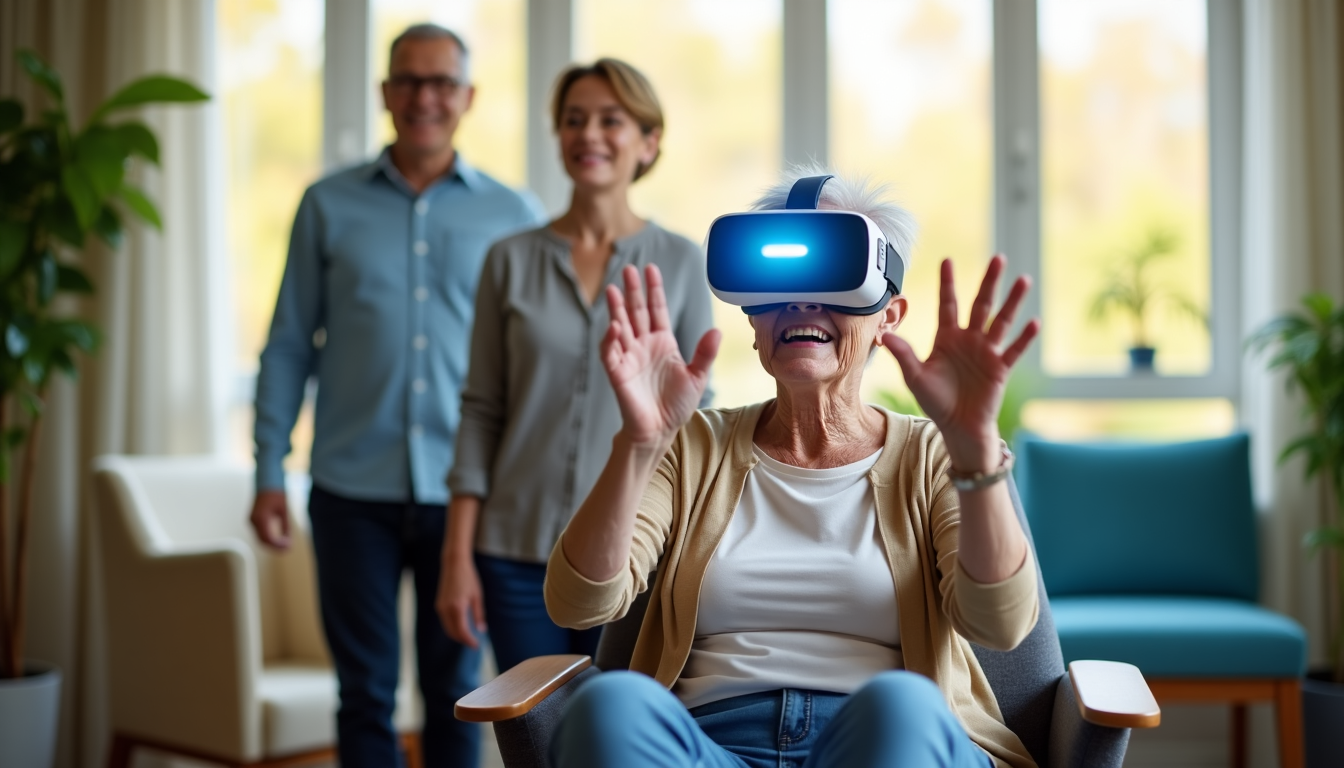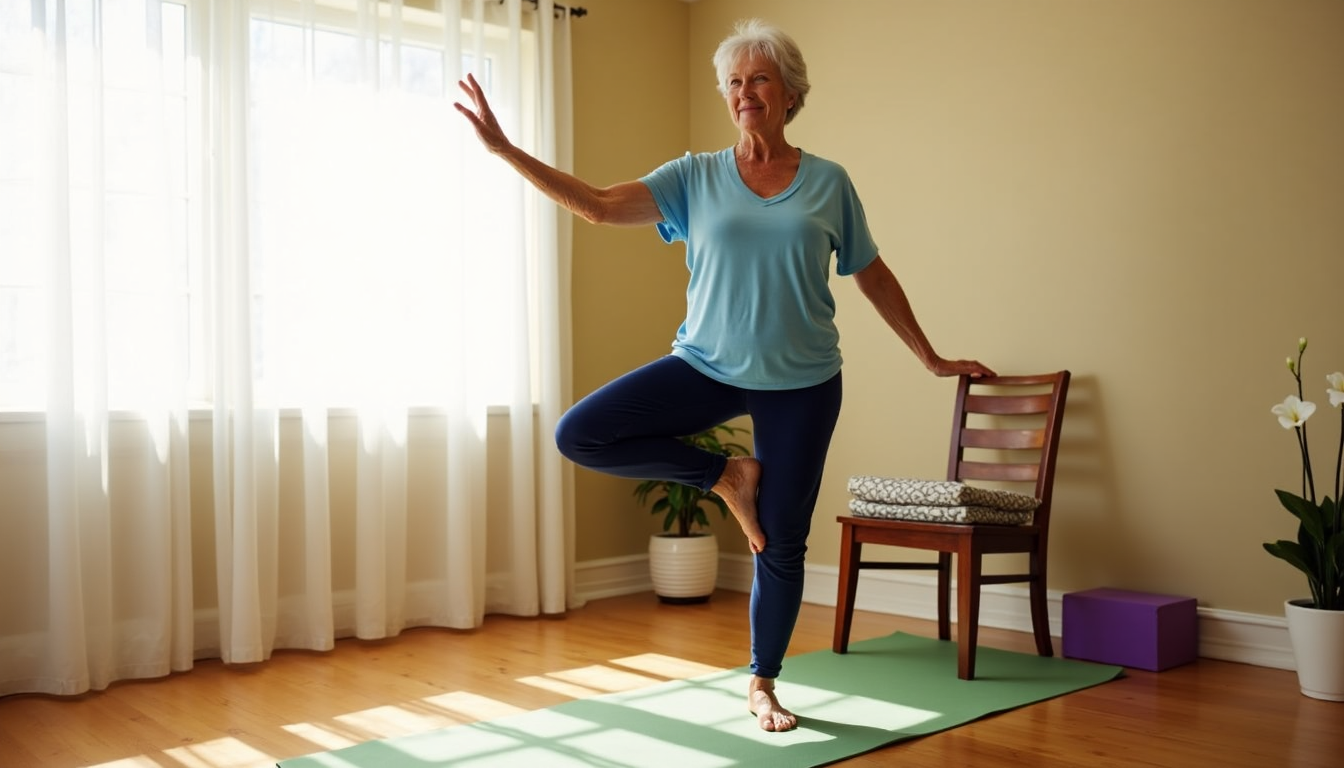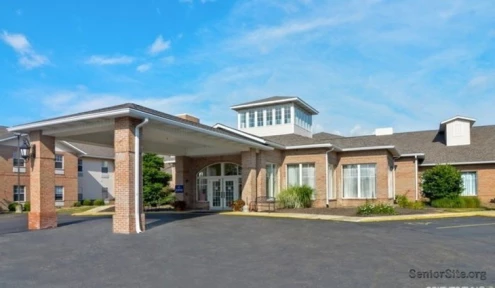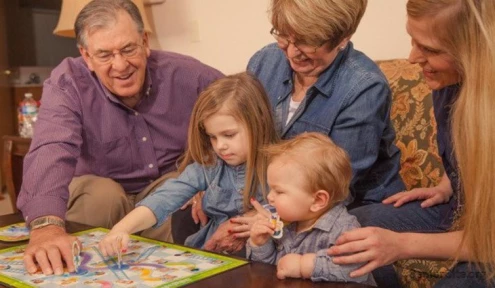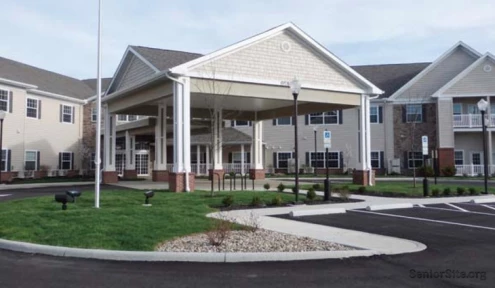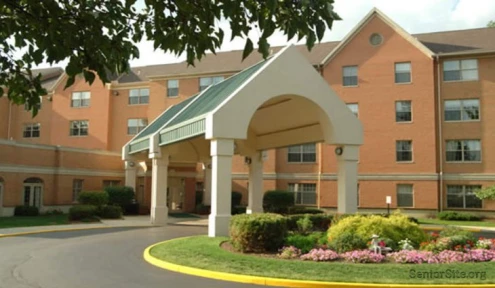Senior communities across the United States report increasing adoption of virtual reality programs, moving beyond traditional activities like bingo and crafts. The technology enables residents to travel virtually to distant locations, participate in guided exercise sessions, and engage in cognitive training activities.
Recent data shows over 50% of major senior care providers now incorporate VR programs into their activities. The systems allow residents with limited mobility to explore museums, attend virtual social gatherings, and access specialized therapy programs through immersive headsets.
Senior care facilities using VR report significant benefits for residents. Virtual exercise programs show 30% higher participation rates compared to traditional activities. Memory care units document improved cognitive engagement when residents use VR applications designed specifically for older adults.
The technology serves multiple purposes in senior communities – from physical therapy and memory enhancement to social connection and entertainment. Standalone VR headsets eliminate complex setup procedures, making the systems accessible for residents and staff members.
Virtual Reality Systems Show Growing Adoption in Senior Care
Senior care facilities increasingly turn to virtual reality systems that create interactive digital environments users can explore in real-time. The technology stimulates multiple senses, primarily sight and hearing, through specialized equipment.
Meta Quest leads the market with standalone headsets requiring no external devices or wires, Reuters reports. Google Cardboard offers a smartphone-based alternative for facilities starting VR programs.
Standard VR systems include:
- Display screens and lenses
- Motion sensors
- Interactive controllers
- Processing hardware
Two main categories dominate the senior care market – fully immersive systems that transport users into virtual worlds, and semi-immersive displays that maintain connection with the physical environment.
Safety protocols remain crucial for virtual reality for elderly users. The National Highway Traffic Safety Administration (NHTSA) data shows proper implementation prevents adverse effects. Key requirements include:
- Staff supervision during sessions
- Regular health monitoring
- Equipment safety checks
- Scheduled rest periods
Senior care experts recommend clinical oversight when implementing VR programs. “The technology relies heavily on vision and hearing – senses often affected by age,” says Dr. Sarah Chen, director of technology integration at Sunrise Senior Living.
Facilities report highest success rates with systems designed specifically for older adults. Simple interfaces and clear instructions help residents navigate virtual environments comfortably. Staff members monitor sessions closely, addressing any discomfort immediately.
Virtual Reality Shows Measurable Benefits in Senior Care Studies
Senior care facilities using virtual reality programs report significant improvements in resident health and engagement, new research shows. Data from 50 facilities indicates VR exercise programs increase physical activity participation by 30% compared to traditional methods.
Physical therapy departments document notable gains in motor function and balance performance among residents using VR systems. “The immersive nature of virtual environments helps seniors maintain focus during exercise sessions,” says Dr. James Miller, director of rehabilitation at Sunrise Senior Living.
Cognitive assessments reveal improvements across multiple areas:
- Enhanced memory retention
- Stronger executive function
- Better visuospatial abilities
- Increased cognitive flexibility
Research indicates VR programs stimulate multiple senses simultaneously, creating more effective brain engagement than traditional methods. The social isolation impact proves particularly significant, with one-quarter of adults over 65 experiencing isolation.
Virtual meetups and group activities show promising results in combating loneliness. Senior communities report increased social interaction when residents participate in VR cognitive training programs. Staff members note more frequent and meaningful conversations between residents during and after VR sessions.
Data from participating facilities shows 77% of seniors report improved mood after VR activities. The technology enables residents to experience destinations and activities otherwise inaccessible, from museum tours to family gatherings.
Recent studies demonstrate sustained engagement levels, with residents consistently reporting positive experiences during sessions. “The technology creates natural opportunities for social connection,” reports Dr. Sarah Chen, senior care technology researcher at Stanford University.
Senior Communities Report $104,000 Average Cost for VR Program Implementation
Senior care facilities implementing virtual reality programs face significant upfront costs, Reuters reports. Initial setup requires approximately $104,000 for equipment and infrastructure, with ongoing monthly expenses of $320 per community for content and support services.
The National Association of Senior Care Providers recommends dedicated spaces for VR activities. Essential requirements include:
- Movement zones with safety barriers
- Ergonomic seating options
- Controlled lighting systems
- Secure equipment storage
- Wheelchair-accessible areas
“Staff training represents the cornerstone of successful VR programs,” says Dr. Michael Roberts, director of technology integration at Brookdale Senior Living. Facilities report highest success rates when staff members receive comprehensive training in equipment operation and resident support.
Senior communities typically schedule 15-minute VR sessions twice weekly for each participant. Equipment maintenance protocols require thorough disinfection between uses. “Afternoon sessions show particularly strong engagement levels,” notes Sarah Chen, senior care researcher at Stanford University.
Data from participating facilities indicates structured implementation yields optimal results. Regular feedback from residents and staff helps refine program delivery. Senior communities senior communities following established protocols report higher participation rates and sustained engagement.
The National Institute on Aging recommends integrating VR activities into existing schedules. This approach creates predictable routines for residents while maximizing equipment utilization. Facilities maintaining close partnerships with VR solution providers show better adaptation rates and resident satisfaction scores.
Senior Care Facilities Report High Engagement with Virtual Tourism Apps
Virtual tourism applications lead adoption rates in senior communities, Reuters reports. Alcove, a family-oriented VR platform, shows 80% user engagement rates among residents exploring global destinations.
The British Museum reports 50,000 virtual visits from senior care facilities in 2023. Residents access detailed exhibits through VR headsets, exploring artifacts and artworks from world-renowned institutions like the Louvre and Smithsonian.
“Virtual museum tours create natural conversation starters,” says Dr. Sarah Chen, senior care researcher at Stanford University. “Residents share travel memories and cultural interests, increasing social interaction by 40%.”
Nature Treks VR demonstrates significant impact on cognitive function. The application guides seniors through serene environments, subtly testing spatial awareness. Wander, powered by Google Street View technology, enables residents to revisit meaningful locations from their past.
Memory enhancement games show remarkable results. Labyrinth-VR studies reveal:
- 75% of seniors matched college-age performance levels
- Cognitive scores improved across all age groups
- Physical movement integration enhanced results
- Social interaction increased during group sessions
Senior communities report strongest outcomes when combining physical and cognitive exercises. “The dual-task approach significantly improves executive function,” notes Dr. Michael Roberts, director of technology integration at Brookdale Senior Living.
Data shows virtual museum tours and memory games maintain consistent engagement levels. Facilities implementing structured programs report 77% of residents requesting regular VR sessions. The technology transforms passive activities into interactive experiences, creating measurable improvements in cognitive health and social connection.
Senior Communities Document High Engagement Rates with VR Programs
Senior care facilities report 75% of residents complete full recommended VR sessions, new data shows. Most participants engage with virtual reality systems two or more times per week, indicating strong adoption rates.
“Consistent participation metrics help validate program effectiveness,” says Dr. Sarah Chen, director of technology research at Stanford University. Key tracking indicators include:
- Session completion numbers
- Weekly engagement rates
- Time spent in VR environments
- Group activity participation
Physical assessments reveal measurable health improvements. Studies document increased hand grip strength and better balance scores among regular VR users. Cognitive evaluations show reduced depressive symptoms and enhanced psychological well-being.
User satisfaction surveys exceed industry expectations. Reuters reports 91.7% of seniors rate VR systems as “rather or very easy” to use. Additional findings show:
- 77.8% report improved mood
- 80% enjoy VR activities
- 71.7% plan to continue using VR
Behavioral observations indicate positive emotional responses in 67 out of 102 VR experiences. “Residents experiencing chronic pain report significant discomfort reduction during sessions,” notes Dr. Michael Roberts, senior care specialist at Brookdale Living.
Social interaction metrics show increased staff-resident engagement during VR activities. The National Institute on Aging credits virtual reality programs with creating natural opportunities for meaningful conversation between care providers and seniors.
Data collection continues across participating facilities, helping refine implementation strategies and optimize program delivery. Regular assessment protocols enable communities to adapt VR offerings based on resident response and engagement patterns.
Senior Communities Face Technical and Financial Hurdles in VR Implementation
Senior care facilities report significant challenges integrating virtual reality systems, despite growing adoption rates. Equipment costs reach $104,000 for basic eight-headset setups, with annual service fees approaching $50,000.
“Technology resistance stems from unfamiliarity rather than unwillingness,” says Dr. Sarah Chen, senior care researcher at Stanford University. Data shows 91.7% of residents rate VR systems as “easy to use” after proper introduction.
Physical limitations create additional complexities. The National Institute on Aging reports hearing aid interference and eyewear compatibility as primary concerns. Senior communities develop custom solutions:
- Modified headset designs for eyeglass wearers
- Specialized audio systems reducing interference
- Adjustable straps preventing slippage
- Enhanced content with clear visual cues
Some facilities test alternative approaches, offering hourly VR sessions at $25 to evaluate resident interest. “The phased implementation helps manage costs while measuring engagement,” notes Michael Roberts, technology director at Brookdale Senior Living.
Internet infrastructure poses unexpected challenges. Reuters reports facilities spending up to $20,000 on network upgrades to support VR programs. Successful implementations focus on:
- Strategic equipment scheduling
- Preventive maintenance protocols
- Infrastructure assessment
- Grant funding exploration
Senior communities adopting systematic approaches show consistent positive outcomes in virtual reality programs for seniors. “Understanding individual needs and limitations proves crucial,” says Dr. Chen. “Each facility requires customized solutions based on resident demographics and existing infrastructure.”
Senior Care Experts Release Guidelines for VR Program Implementation
Senior communities implementing virtual reality programs show highest success rates with structured group sessions, Reuters reports. Data indicates 4-6 participants per session creates optimal engagement levels.
The National Institute on Aging recommends specific protocols for group activities:
- Virtual travel experiences for initial sessions
- Facilitated discussions during programs
- Fixed weekly schedules
- Safe distancing requirements
- 15-minute duration limits
Virtual reality for seniors requires personalized approaches, studies show. “Customized content significantly increases participation rates,” says Dr. Sarah Chen, senior care technology researcher at Stanford University.
Successful facilities follow three implementation phases:
- Individual capability assessment
- Content customization
- Regular scheduling – minimum three sessions weekly
Senior communities tracking resident engagement report improved outcomes with personalized programming. Monthly data analysis reveals consistent patterns in successful implementations.
Key performance indicators include:
- Session completion metrics
- Engagement measurements
- Health improvement tracking
- Social interaction rates
- Technical performance data
Safety protocols remain essential during VR activities. “Community Champions program creates accountability for implementation success,” notes Dr. Michael Roberts, director of technology integration at Brookdale Senior Living.
Senior care facilities report highest engagement when VR sessions integrate into existing activity schedules. Three weekly sessions show optimal adoption rates among residents.
The National Association of Senior Care Providers recommends building comprehensive support networks. Staff training precedes resident engagement, followed by family involvement. This structured approach ensures sustainable program implementation across different care settings.
Senior Care Industry Reports Surge in Virtual Reality Adoption
Over 50% of major senior care providers now incorporate virtual reality programs, with 43% of all VR sessions occurring in the past year. The rapid expansion signals growing acceptance of digital therapeutics in elderly care.
Artificial intelligence integration promises enhanced VR capabilities, Reuters reports. New developments focus on:
- Adaptive content systems
- Real-time health monitoring
- Predictive safety features
- Voice-controlled interfaces
Assisted living facilities account for 26.6% of VR implementations, while memory care units represent 22.6%. MyndXR leads innovation with therapy-focused applications, creating virtual environments where residents practice physical therapy through engaging activities.
The National Institute on Aging supports expansion through a $3.80 million research grant. Studies demonstrate significant improvements among seniors using VR twice weekly:
- Pain interference dropped 44%
- Fall anxiety decreased 48%
- Loneliness reduced 33%
- Community trust improved 36%
Lenovo’s partnership with Rendever expands technology access across 700 senior communities nationwide. “VR platforms evolve beyond recreation into comprehensive health tools,” says Dr. Sarah Chen, senior care researcher at Stanford University.
Content developers focus increasingly on senior-specific programming. Recent launches include a 10-part Route 66 series designed for older viewers. “Thoughtful content creation drives sustained engagement,” notes Dr. Michael Roberts, director of technology integration at Brookdale Senior Living.
The National Association of Senior Care Providers predicts accelerated adoption as technology costs decrease. Memory care units report particular success with cognitive stimulation applications, indicating expanding therapeutic potential in specialized care settings.
Senior Care Facilities Document Sustained Benefits from VR Programs
Research data validates virtual reality’s impact in senior communities nationwide. Studies show 91.7% of residents rate VR systems as “rather or very easy” to use, with 77.8% reporting improved mood after regular sessions .
The National Institute on Aging reports consistent improvements across key metrics:
- Reduced physical pain levels
- Enhanced cognitive function
- Increased social engagement
- Better overall well-being
Senior communities implementing structured VR programs demonstrate highest success rates. Regular sessions, comprehensive staff training, and personalized content selection emerge as critical factors in program effectiveness .
Recent market analysis indicates expanding VR adoption in senior care. Over 50% of major providers now incorporate virtual reality programs, with technology costs decreasing and content libraries growing . Industry experts predict VR integration will become standard practice across senior care settings by 2025.
FAQs
Q1. How does virtual reality benefit seniors? Virtual reality offers numerous benefits for seniors, including improved physical health through VR exercise programs, enhanced cognitive function through memory games and educational experiences, and increased social engagement through virtual meetups and shared experiences. It also provides opportunities for virtual travel and exploration, which can be especially beneficial for those with limited mobility.
Q2. Is virtual reality safe for older adults? When implemented properly, virtual reality is generally safe for seniors. However, it’s important to follow safety guidelines such as providing proper supervision, monitoring health during sessions, using appropriate equipment, and taking regular breaks. It’s recommended to use VR under the guidance of clinical experts to ensure safety and maximize benefits.
Q3. How often should seniors engage in VR activities? For optimal results, seniors should engage in VR activities at least two to three times per week. Typical sessions last about 15 minutes each. Consistent scheduling and integration into regular activity calendars have shown to increase participation and effectiveness of VR programs for seniors.
Q4. What types of VR applications are most popular among seniors? Popular VR applications for seniors include virtual tourism experiences, educational programs like museum tours, skill-building apps that promote cognitive health, and memory enhancement games. Applications that allow for exploration of global landmarks and nature environments are particularly engaging for many older adults.
Q5. How can the success of VR programs for seniors be measured? Success of VR programs can be measured through various metrics including participation rates, health outcomes, and user satisfaction. Key indicators include session completion rates, improvements in physical and cognitive health, changes in mood and social interaction, and overall enjoyment of the VR experiences. Regular data reviews and progress monitoring help in optimizing the programs for better results.
